- Small Dog Place Home
- Training
- Puppy Training Methods
7 Popular Puppy Training Methods
Puppy Training Methods by Colin Crown |Published 07-19-2022
Puppies are bundles of energy and can be a handful for new dog owners. Puppies need the training to learn basic obedience, build their confidence, and become well-mannered family members.
There are many different ways to train a puppy, as you'll see, some methods work better than others. From clicker training to crate training and everything in between, these seven popular methods will help your puppy thrive in their new home.
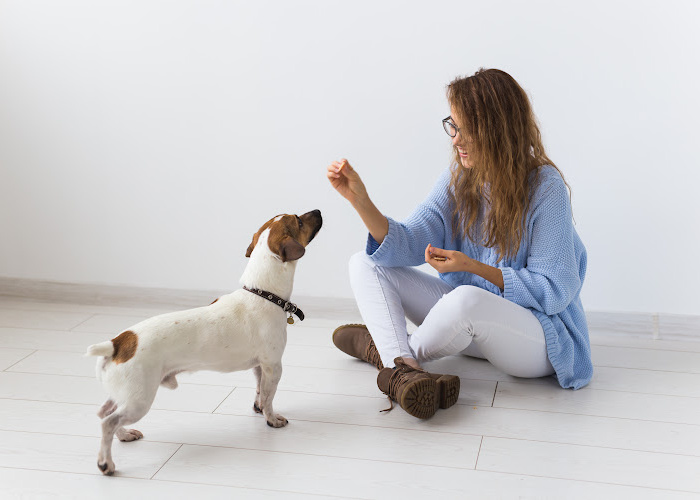
Puppy Training Methods
1. Positive reinforcement
Positive reinforcement training means rewarding your dog for doing the right thing. This method is the most humane and effective way to train your dog.
Positive reinforcement training works because there's no threat of punishment it's all about having fun and rewarding good behavior. Basic commands like sit and stay are easy to train using positive reinforcement. You have to reward your dog when they've done one of these commands correctly.
Some dog trainers carry treats around when they're working with the dog. Dogs love treats and will do anything to get one, so this works well if you don't overdo it. You want your puppy to want to obey your commands because they get rewarded for doing so, not because they want a treat. Other trainers will use toys or play as favorable reinforcement.
Most dog trainers also use various teaching tools and equipment to make training easier.
A leash is a great tool because you can use it to control your dog when they're doing something you don't want them to do.
A training collar or harness is sometimes used, but not as often as the leash.
Dog throwing discs, targeting sticks for retrieving, and agility equipment are all nice for training purposes. You can get all these different items at most pet supply stores, especially those specializing in dog products.

2. Scientific Training
Scientific training is one of the most popular ways to train your dog. It's based on the Pavlovian theory of classical conditioning, which means that your brain only remembers something if it's associated with something that triggers a positive or negative emotion.
In this method, when your dog does something you want them to do, such as sit or lie down, you associate the behavior with good things and make it easier for them to do in the future.
For example, whenever your dog sits, and you praise them, they will associate sitting with something positive.
The next time you say sit, the dog will sit faster and more willingly. This creates a long-term sitting behavior and comes with the reward of praise. If your dog doesn't do what you want, there will be no training.
Scientific training works well when you start at a young age but can be difficult to do at an older age. This training method can also be challenging with untrained puppies because they'll have no concept of what you're trying to do.
You have to make sure your puppy knows how to do the command before you start this method, or it won't work.
One of the main benefits of scientific training is it's short and sweet. Since you're only doing one command at a time, this makes it very easy and quick for owners who are limited on time. It is a very effective puppy training method, but you must stick with it because you'll have trouble extinguishing the behavior if you stop.
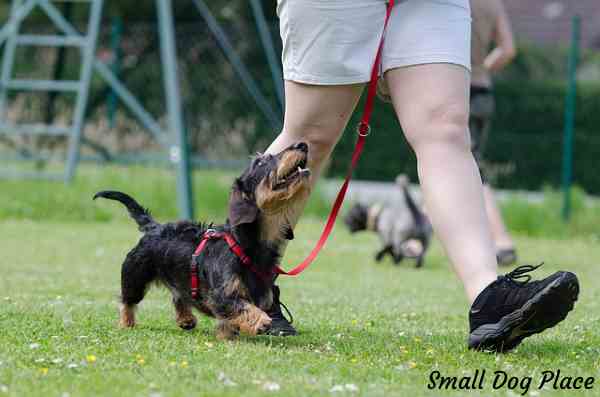
3. Electronic Training
Electronic training is a way to train your dog with the help of electric shock collars. Electronic training has been around for a very long time and was extremely popular before positive reinforcement became more mainstream.
This method uses an electronic shock collar to provide an "unpleasant sensation" whenever your dog does something you don't want them to do.
This method can be controversial because many people feel it's inhumane, which it is. The shocks can potentially cause physical and psychological damage to your dog, which is the exact opposite of what you're trying to do when training a puppy.
Electronic training has many dangers, but it remains popular because it's an easy way to train your dog.
4. Clicker Training
Clicker training is a newer type of training based on the principles of positive reinforcement. The main difference is in how you use the rewards. In clicker training, you use a small plastic box that makes a "click" noise when you press it with your thumb. When your dog does something good, give them a treat and immediately hold the box and make a "click" noise.
It may sound simple, but this training method can differ from most people's expectations. When you're starting out, you want to ensure that your dog knows the correct response.
You also want to praise them and ensure they understand what the click means. It might take some time to get used to this method, but once you do, it's a great way to train your dog.
There are many benefits to using clicker training with your dog. The clicker is fun and easy to use, you don't have to carry treats around, and it's much faster than other puppy training methods.
One of the main benefits is there's no punishment or immoral associations. If your dog does something wrong, you don't click or treat them, which means they won't associate negative things with the click.
5. Alpha Dog Or Dominance
Alpha dog or dominance is another training method that often gives people mixed feelings. The principle of the alpha dog is that you have to be the one in charge, and the dog must obey you.
You want to be their leader by showing them who's in order. Obeying commands makes your dog know that you're their leader, but there are several things you should and shouldn't do based on this principle.
First, you must call your puppy by their name when they come to you. The second is that you shouldn't allow your dog to dominate you.
You want to maintain control of the situation, and you need to be the one in charge. The main problem with this type of training is it can be challenging for dogs to understand if you aren't consistent or firm enough with them. It's easy for them to get the wrong idea, which will worsen things later.
Puppies and adult dogs require very different types of training, so you can't use the same methods with both of them. Puppies must have experiences that help them grow and develop, so you need to start training them as early as possible.
When considering getting a puppy or dog from a breeder, you should ask whether they've been socialized. It is also called 'Compulsion' training, the most outdated dog training method.
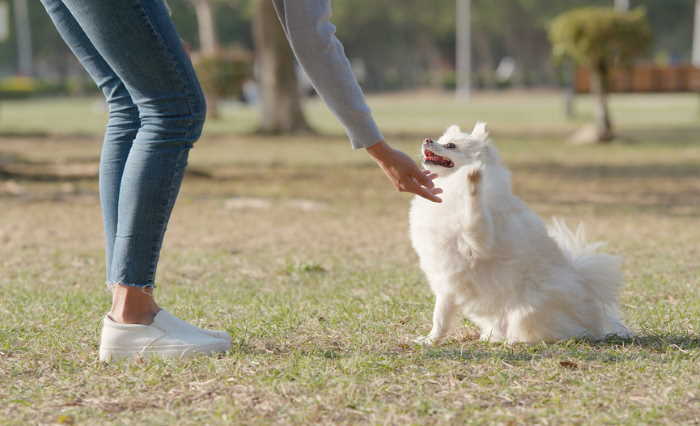
6. Relationship-Based Training
Relationship-based training is the primary goal of clicker training. You want to build a relationship with your dog so that you can use their natural instincts to help you train them. You want to show your dog that you love and care for them, and they will naturally do things because they love you.
Some people start relationship-based training by showing the dog they're in control while playing with them or having fun. It makes them get used to your presence and helps them feel more comfortable around you.
The main benefit of this kind of puppy training method is it makes training more accessible. When you're working with your dog, you have to show them that you're the leader, and if your relationship is already good, it will be much easier.
When starting puppy training, you should ensure that your dog is used to their name before even trying any commands. This will be helpful for later on when you start giving simple orders and can't always rely on treats or praise.
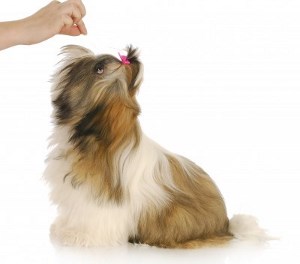
7. Model-Rival Or Mirror Training
Model rival or mirror training is a way to help your puppy learn commands by using another dog. This method, in some ways, combines other training methods. You can use positive reinforcement, but you must show your puppy the leader and that you're the alpha dog for the two dogs to interact well.
One of the most significant benefits of this type of training is it's much easier to train multiple dogs than if you only had one.
You won't have to worry about teaching the separate dogs commands, and you can focus on making them get along, which will be easier on you. It's also much more accessible for the dogs because they don't have to learn different commands simultaneously.
Conclusion About Puppy Training Methods
To sum up, there are many different puppy training methods and philosophies that you can take when training your dog.
Different methods will work better for some dogs and may not work as well for others. It's essential that you have a plan and a good understanding of the training before starting with your puppy.
You will be laying the foundation of how they will act as adults, so it's essential to take your time when raising your puppy and consider what techniques you want to use.
Puppy Training Methods: Author Bio
Colin Crown, Digital PR Specialist for Inception K9 Academy has 13 years of dog experience. He is a diehard Golden Retriever and German Shorthaired Pointer fan. On the weekends, you can find him at the local park playing fetch with his dogs.
Puppy Training Methods
Pin for Future Reference
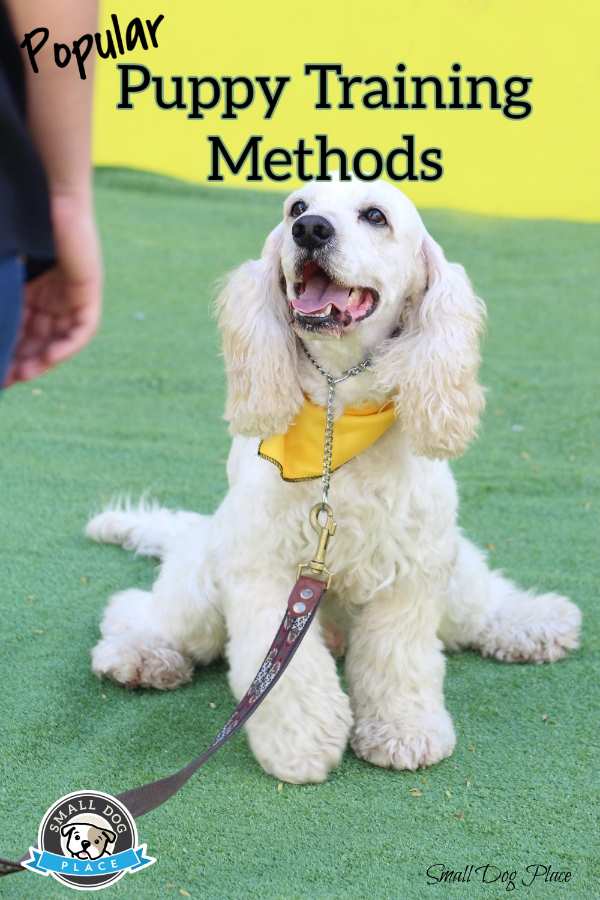
About Janice (author and voice behind this site)
Having lived with dogs and cats most of her life, Janice served as a veterinary technician for ten years in Maryland and twelve years as a Shih Tzu dog breeder in Ohio.
Her education includes undergraduate degrees in Psychology with a minor in biology, Early Childhood Education, and Nursing, and a master's in Mental Health Counseling.
She is a lifelong learner, a dog lover, and passionate about the welfare of animals. Her favorite breed for over 50 years has been the Shih Tzu, but she has also lived with Poodles, Maltese, Yorkshire Terriers, Beagles, English Bulldogs, Carin Terriers, and a Cocker Spaniel.
When not writing, reading, and researching dog-related topics, she likes to spend time with her eight Shih Tzu dogs, husband, and family, as well as knitting and crocheting. She is also the voice behind Miracle Shih Tzu and Smart-Knit-Crocheting
Does This Article Deserve Your Thumbs Up?
We always appreciate your support and encouragement. Your thumbs up means so much to us. Please like this article.
If you find this page or any page on Small Dog Place Helpful, or useful in anyway, I'd love it if you would click the small heart found on the bottom right of each page.
You can also share or bookmark this page -- just click on the:

Free Monthly Newsletter
Sign Up for Our Free Newsletter and get our Free Gift to You.
my E-book, The Top 10 Mistakes People Make When Choosing a Dog (and how to avoid them)



